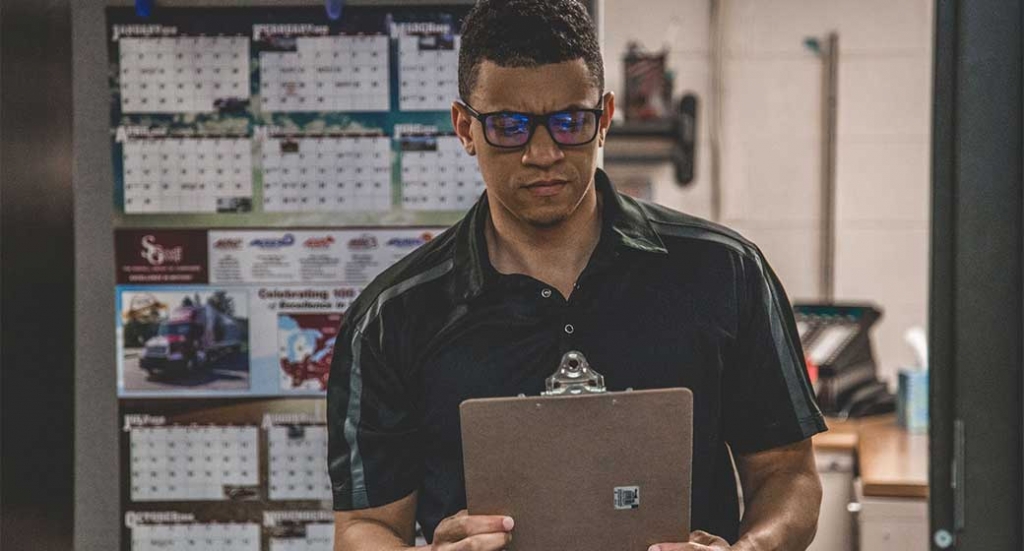The New Normal: Part of a new series of articles focused on restaurant recovery; issues, best practices, and process changes that will become part of everyday business going forward.
Restaurants are beginning the slow journey back from closures due to COVID-19. But many states are struggling with rising cases of the coronavirus. And some states have even begun to shutdown some restaurants and bars in response. If one of your employees is diagnosed with COVID-19, the entire staff that has been in contact with that employee could be quarantined and unable to work for 14 days. So let’s discuss scheduling restaurant staff to avoid potential problems during these challenging times.
The Quarantine Problem
The issue is pretty straight forward: If one of your employees is diagnosed with COVID-19, all the other employees that worked with the infected individual will be expected to self-quarantine for 14 days (and should get tested themselves).
This means that your entire crew could be sidelined for 2 weeks. If you don’t plan well in advance, this could mean that your restaurant would have to close again. And that could be enough to tip some restaurants over into closing for good.
So, while you can’t really plan around an employee being diagnosed with COVID-19, you can take steps to help prevent a total closure by carefully scheduling restaurant staff with this scenario in mind.

Scheduling Restaurant Staff as Teams
Even in the best of times, scheduling restaurant staff is a pain. One team member can only work weekends. One wants every Wednesday off. Another wants split shifts. And so on and so forth.
Scheduling restaurant staff during these times becomes even more challenging. Your goal is to have multiple, complete sets of workers for every role. These teams of workers should be self-contained. Team members should not be on multiple teams.
You see, by having separate, complete teams you have a better chance of being able to staff your restaurant in case one team is sidelined due to a COVID-19 infection.
Unfortunately, this is easier said than done for a lot of restaurants and foodservice operations.
Clearly Defining Roles and Positions
All restaurants seem to have those employees who can do multiple jobs. They are the utility in-fielders of the restaurant world. They can work the grill and they can tend the bar. So, it is easy to lose sight of what all the roles are that you are trying to cover during an individual shift.
This is a good place to start with team scheduling. Define all the roles needed for each shift. For example, do you have a host or hostess to greet guests, assign tables and seat your customers? Is this a role that your waitstaff fill for you or is it a separate role?
The same thing goes for back-of-the-house operations. Who does prep work? Does that person cook as well? Who does dishes and clean up?
Defining your roles will help you to plan your scheduling strategy more effectively.
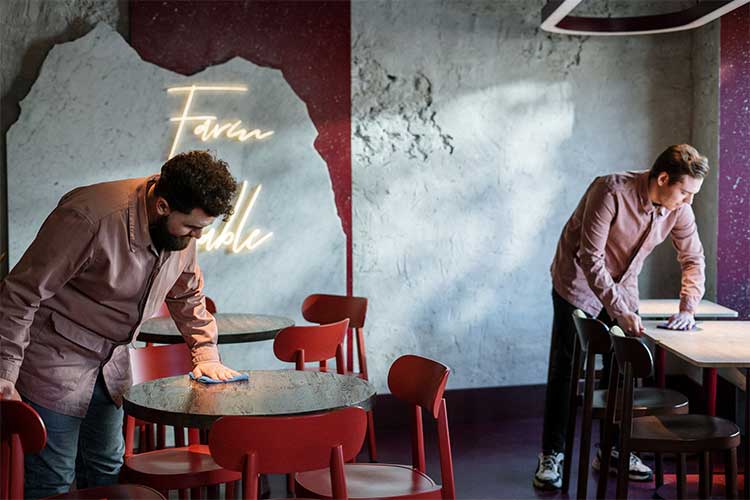
Create Full But Separate Teams
Once you have defined your roles, then you can start putting together your teams. How many teams you need to create will be a function of the shifts you need to cover. For example, are you running both lunch and dinner service? If so, you will need multiple teams to cover these shifts.
You might also consider creating dedicated prep teams. Prep work can be time-consuming. If you are running lunch and dinner shifts, you could have an early morning prep team that comes in to do the day’s prep work separate from the rest of the teams.
But again, you should consider having contingency plans for your prep team as well. If a member of your prep team is diagnosed, all the other members are off the board as well. So plan ahead on how you would adjust in case of that type of circumstance.
You also might want to consider a separate team for overnight deep cleaning and disinfection. Not a bad idea as an additional measure to keep both your customers and your employees safe.
Avoid Overlapping Shifts
This directive will be very difficult for some businesses. Overlapping shifts are common in foodservice. So, this may be a big change for some organizations. And it might require a complete overhaul of the way they think about scheduling.
This means that the prep crew should not interact with the lunch team. And the lunch team should not interact with the dinner squad.
Consider using a whiteboard or bulletin board for inter-team communication. Are we low on creamer? Put it on the board. Use this type of communication rather than face-to-face interactions between teams if at all possible.
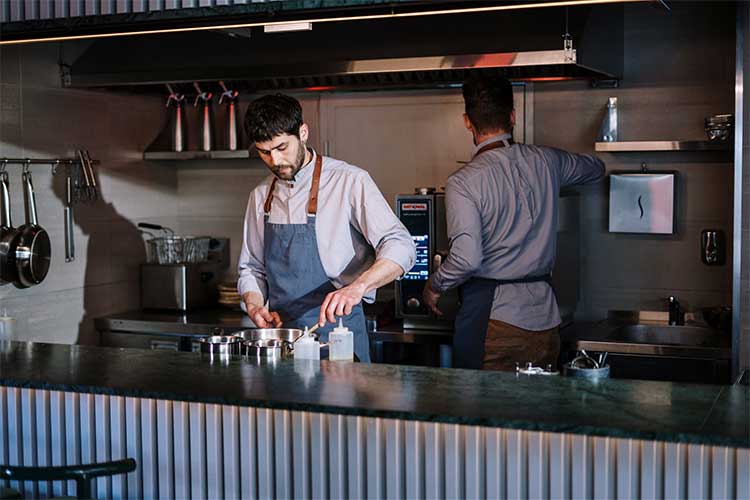
Create a “Changing of the Guard” Process
It probably isn’t realistic to have absolutely no contact between shifts. But your goal should be to reduce that contact as much as possible.
For example, team members should only interact with other teams if both parties are fully masked.
Designating specific entry and exit points can help as well. If you have a break room or employee locker room, plan out how the shift change will work.
For example, the incoming team may be expected to arrive 15 minutes before the outgoing team is scheduled to leave. The incoming team members are the only ones allowed in the break room during that time. They can change, put their things away, and generally prepare for their shift. Once they are done, they would exit the break room and congregate in a designated area.
Then the outgoing team would be expected to go to the break room to collect their things, change, etc. They would then exit the property, keeping contact with the incoming team to a minimum.
Document Everything
As a manager, you should strive to document all your new processes just in case the worst-case scenario comes to pass. If you have to pull an entire team due to a COVID-19 exposure, you will want to be able to show that the team being pulled was isolated as much as possible. This isn’t a guarantee that the health department won’t order at least a temporary closure. But having this documentation could help shorten or even avoid a closure by showing how you prepared in advance for this situation.
You will also want to be able to show the health department what you have done to clean and disinfect both as part of your regular routine and any extra deep cleaning you might have done after an infection was detected.
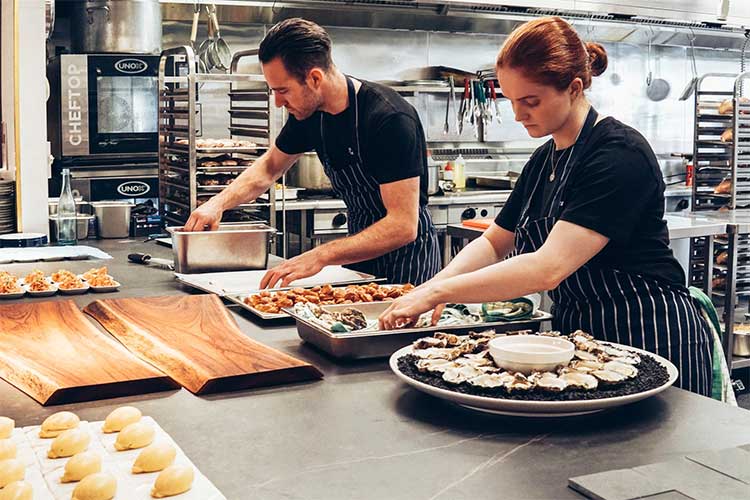
Restaurant Staff Scheduling Issues
Unfortunately, there isn’t a perfect system for this situation. There are a number of issues that are bound to arise.
First and foremost, this type of scheduling could require more employees on your roster. It doesn’t necessarily mean that your total scheduled hours will change. But since you can’t cross-schedule an individual across multiple teams, you may need more bodies.
This is a good news/bad news situation. With current unemployment reaching record numbers, there should be plenty of available workers. But depending on your needs, it may be difficult to schedule all your teams for a full 40-hour workweek.
It’s a double-edged sword to be sure.
No Employee Shift Swapping
Another issue is that you will no longer be able to allow staff to swap shifts among themselves. All changes would have to go through management. And even then, you will want to think through how you make substitutions between teams. You don’t want to have to sideline two full teams because of an exposure that crosses over because you had to swap a single team member.
So, maybe consider having some bench players that can be called upon to swap out roles on specific teams. This is where having utility players can be very beneficial. But again, this type of arrangement could reduce the overall scheduled hours of individual employees. You can’t just have people waiting to be called up in case of emergencies (or simple shift changes).
But you could have a full team that includes extra members. That is, not all team members on a specified team would be on-site every shift. But be careful not to cross-over employees between specific teams or that defeats the purpose.
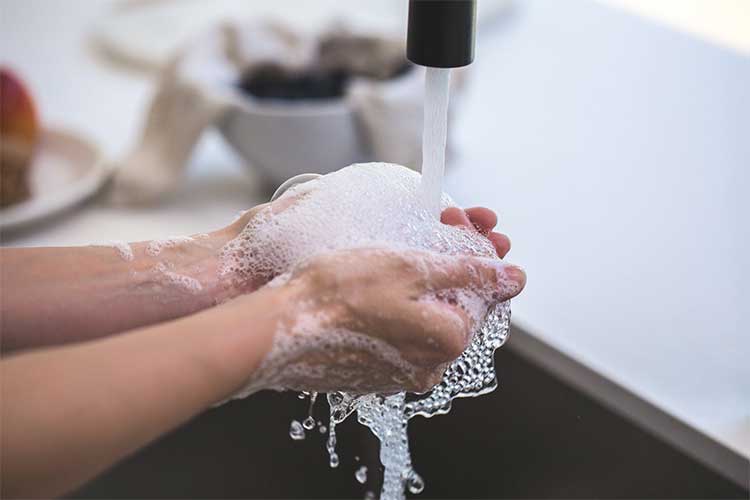
And Finally, Don’t Forget the Basics
Scheduling restaurant staff into discrete teams isn’t a magic bullet for preventing restaurant closures or other problems. This is just another tool in the toolbox. You still need to be on top of creating a social distancing plan for your restaurant space, for example.
And you should definitely take extra care in training your employees on new processes, especially around best practices for mask and glove use. Don’t expect them to know already. Trust us. We’ve already seen way too many restaurant employees wearing masks below their nose or worse, wearing them like a chin strap. That does absolutely no good.
So, scheduling by itself won’t help you avoid a closure due to a COVID-19 infection. But proper scheduling of your restaurant staff could indeed help you get back in the game more quickly or avoid a closure altogether if you are able to cover your shifts with non-exposed employees.
But that takes care and planning. Start now to avoid problems later.

